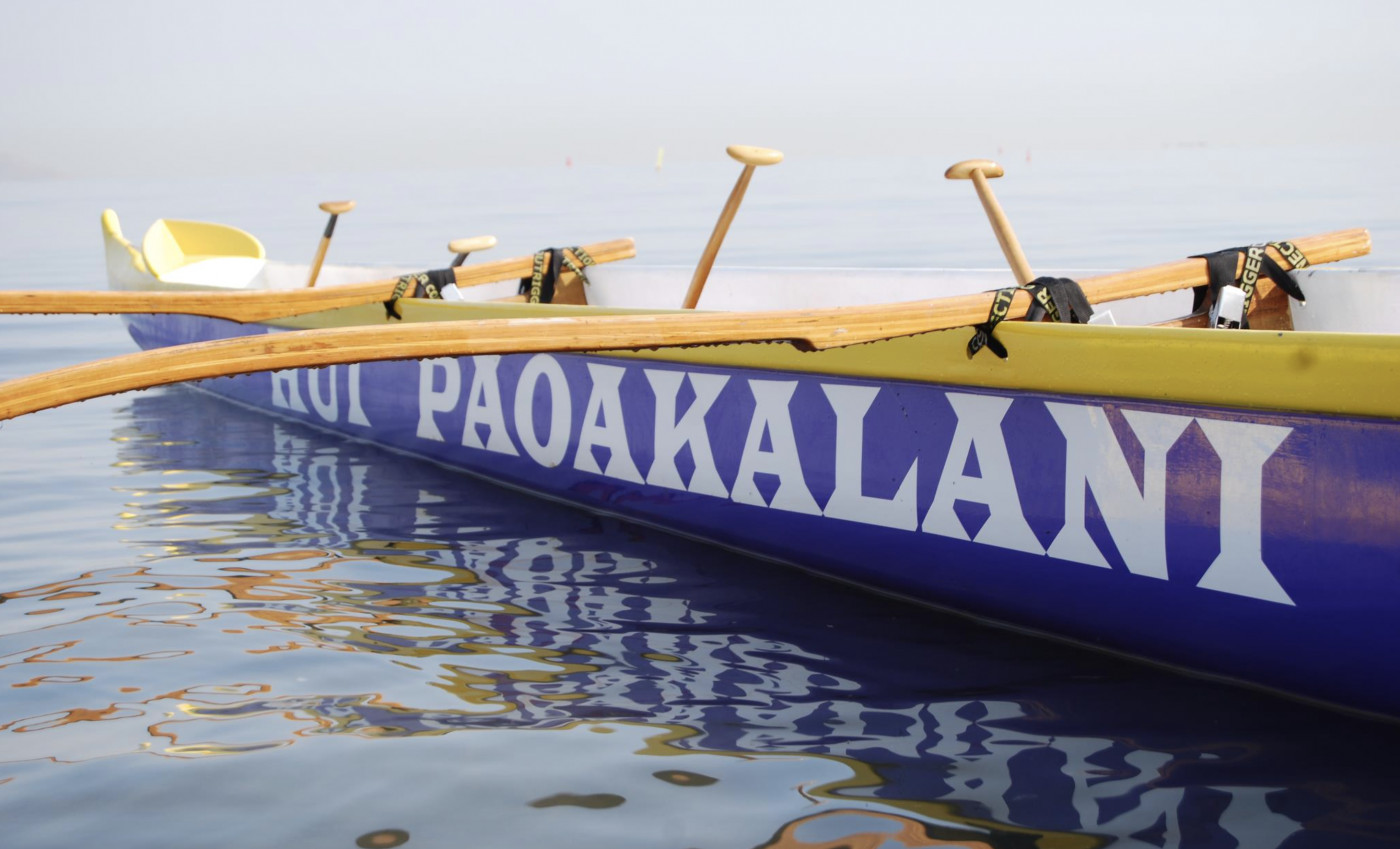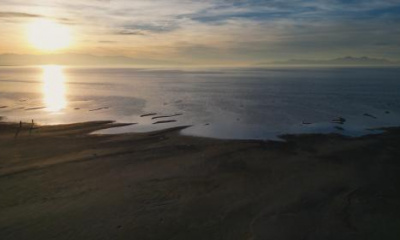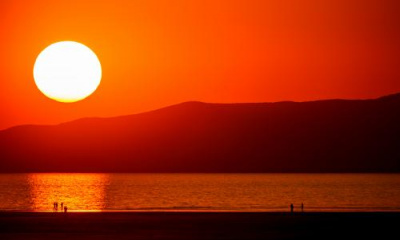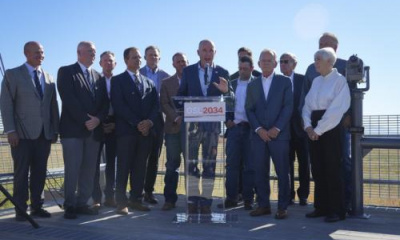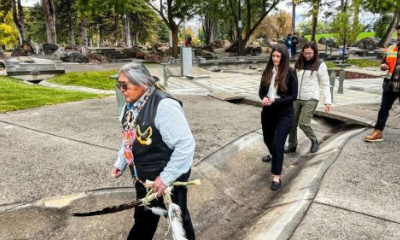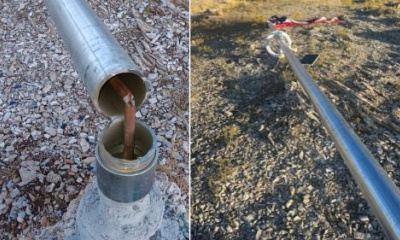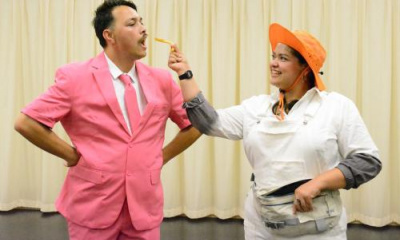Editor's note: This article is part of an occasional series by the Great Salt Lake Collaborative showcasing how to have fun at the Great Salt Lake. For more coverage go to greatsaltlakenews.org.
As the sun begins to fall behind the rugged mountains surrounding Great Salt Lake, clear water ripples around a 40-foot, dark blue canoe with yellow trim and big white letters that read “HUI PAOAKALANI.” Each canoe holds six people, all of whom have a specific role as they paddle through the cool waters.
For 13 years, members of the Hui Paoakalani Hawaiian Outrigger Club launched the canoes from the Great Salt Lake Marina every Saturday morning – a great workout for paddlers, but that was never the main purpose.
“The Hawaiian people don’t like to look at the canoes as being an exercise piece of equipment,” said club co-founder Darren Medeiros. “These canoes have spirits of their own, and we use the canoes to perpetuate our culture.”
Founded in 2007 and named with a nod to legendary surfer Duke Paoa Kahanamoku, the club became all but extinct after COVID-19 forced it to shutter its operations for two years. Co-founder Ben Au said lower water levels at the lake and the cost of maintaining the canoes made reestablishing the club seem impossible. The club stands alone as the only Hawaiian outrigger organization in Utah, and losing it means the loss of an important cultural touchpoint for Pasifika people across the Salt Lake valley, Au said.
"The canoe club is about … teaching people and kids how to paddle, how to steer, the purpose of the canoes, what it means to our culture,” he said. “The other thing is that it is a social event – we all get together."
Over the years, more than 60 people became club members or volunteers, coming from Logan to Provo, Au said. They would paddle from April to October, sometimes even into November, before the lake got too cold.
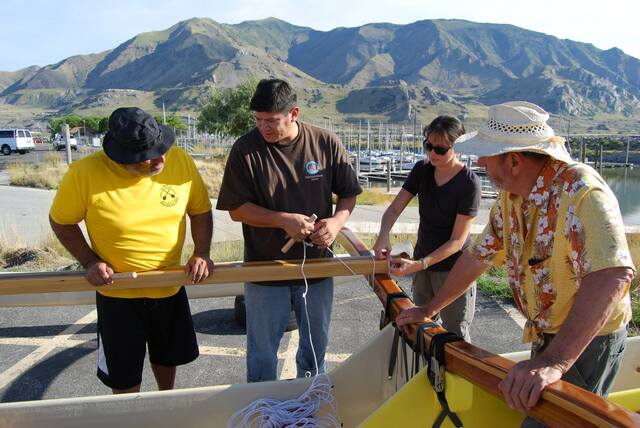
Rigging of Hui Paoakalani’s Hawaiian outrigger sailing canoe assisted by Mark Ellis, Hokulea captain and master navigator from Honolulu (center) alongside Ben Au, Kehau Ellis, and Tom Parker (L-R) at the Great Salt Lake Marina. (Photo courtesy of Hui Paoakalani Hawaiian Outrigger Canoe Club).
Au said paddlers would take the canoes nearly eight miles from the marina to Antelope Island.
“We would go once, maybe twice a summer, and it would usually take about an hour to an hour and a half,” he said.
The club, called simply “the Hui” by its members, offered more than canoes and a launching point to the water. It was also a cultural hub with hula classes, shaved ice, lau lau, music and dancing, Au said.
Whether on the islands or in landlocked Utah, Medeiros said, Hawaiians have found ways to bring their culture wherever they live.
"Hawaiian culture never leaves the Hawaiian people,” he said. “The club was a way to rally them and bring them together to connect with the culture.”
Mederios said this emphasis on connection and belonging makes the club a cultural institution, fostering a sense of identity and heritage among its members.
A shrinking lake
The decline of Great Salt Lake in recent years has made it more difficult for these canoes to get back into the water.
"The Great Salt Lake has been dropping,” Au said, “and it has dropped to such a level that it is hard to get out to a safe area to paddle because what used to be … underwater is now above water."
Little reefs, rocks and stalagmites are now visible above the surface, Au said, which makes canoeing more challenging and dangerous.
The challenges, Medeiros said, require a solid team of paddlers to navigate. When conditions are right and water levels are higher, however, he said there’s no better place for paddling in the state.
"The Great Salt Lake is perfect for outrigger canoe paddling because of the high altitude, winds and glass-like water," he said.
But Mederios said it wasn’t enough. When the club tried to restart after the height of the pandemic, recruiting people to come back and securing donations and funding was difficult.
“That’s when things started to slow down,” he said. “These canoes are a lot of upkeep, and it is not cheap to keep the canoes in the marina.”
An unprepared generation
Another co-founder, Butch Porter, said he’s surprised Utah’s Hawaiian community does not take advantage of the club. Like the canoes, Great Salt Lake has its own culture and does so much for our environment and community, he said, but more people need to be aware of it.

Steersman Butch Porter (back of boat) and Darren Medeiros (front) teach a group teenagers how to paddle a Hawaiian outrigger canoe at Great Salt Lake Marina. (Photo courtesy of Hui Paoakalani Hawaiian Outrigger Canoe Club).
Au, Medeiros and Porter all said they wish they had taken the opportunity to come up with a succession plan. Many of the club members and founders are in their 50s, 60s and 70s, Medeiros said, and teaching the younger generations how to take over may have helped save the club.
About 1.2% of Utah’s population is made up of Native Hawaiians and other Pacific Islanders, according to 2023 Census data. Many of them are members of the Church of Jesus Christ of Latter-day Saints, which Au said places a similar importance on genealogy and understanding family history.
"It is important for everyone to know where they are from,” Au said. “Knowing your genealogy helps you figure out what you want in life.”
At its height, Medeiros said, club members would invite high school football teams from Salt Lake’s west side communities – which included many Pasifika players – to the marina. Already familiar with teamwork, Porter said the club took that connection to the water and introduced the players to parts of their culture they may not have experienced before.
"Many people of Hawaiian or Polynesian descent have lived in Utah their whole lives and can struggle to connect to their roots, and the canoe club offers that,” Au said.
Now that it’s gone, he said, so are opportunities to connect with other members of Utah’s Pasifika communities on the waters of the lake. He hopes efforts to revitalize the cultural tradition of paddling – reminiscent of taking the canoes between the Pacific’s islands – can one day return to Utah.
“The Great Salt Lake has its own culture and spirit,” Au said. “You can feel it when you are out on the water.”

